How to make progress faster
Whether you’re just getting into art or want to make faster progress, in this article, I discuss how passion, coupled with your natural approach to learning can help get the results you want.
Disclosure: Some of the links on this page are affiliate links. I earn a reward or small commission when you use those links at no cost to you. Read more about the Affiliate Disclosure on the Terms page.
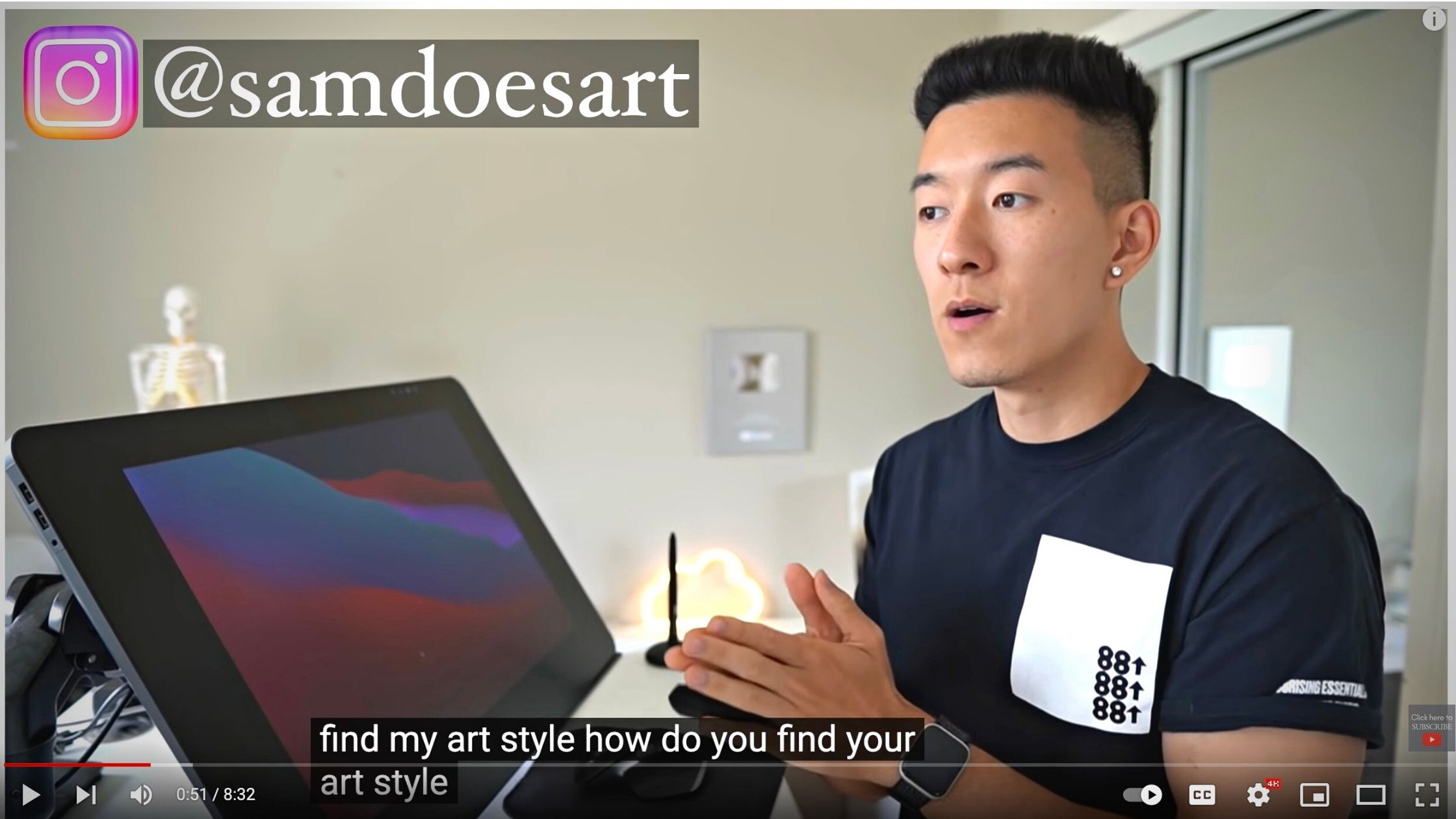
Are you wondering how to get better with your art skills?
Was your art going well for a while but now you’ve hit a ‘plateau’?
What about finding a ‘style’? Is this a preoccupation?
Have you experienced pressure to have an art style that is distinct or unique to you?
Maybe it feels harder than before to make progress and you’re not even sure what steps to take to make gains.
I’ve experienced all of the above.
What worked for me, the solution – might not be what you think.
Sometimes we must look beyond the pain points to fix an issue. We need to find the root cause of the problem.
I came to understand this ‘root cause’ principle from my physiotherapist. A visit about a sore knee turned into an exercise program to fix my posture. The knee pain went away after a few months of following a functional mobility plan.
Concerns about art style or stalled progress can be addressed by applying similar principles.
Therefore, I went on a quest to fix the root cause of my art pains.
📚 BTW: If you’re experiencing body niggles either from lingering injuries, repetitive use, or inactivity (sitting/standing), the mobility exercise plan from my physiotherapist came from Dr. Kelly Garrett’s program. I bought Dr. Garrett’s Supple Leopard book (Amazon) and those exercises are now integral to my wellness routine.
📚 To learn more about my art warmups read 10 tips to accelerate pen and ink drawing skills.
How to build experience for your art style
While researching the root cause for my lack of “distinct art style”, a reoccurring theme in social media comments from professional illustrators and popular visual artists was:
- Art style develops naturally, and to;
- Just be yourself and do the art that makes you happy.
“Do what makes you happy” sounds vague, but let’s take digital artist Sam Yang as an example.
Sam launched his career by doing fan art. He said he did this because that’s what got the “likes”.
It was only when he switched to drawing subjects he was passionate about that the real magic happened.
Essentially, what the pros are saying is that a beginner artist might believe that their pain point is finding a unique style. Yet the root cause is not lack of style. It’s a lack of experience.
Therefore, the remedy to this pain is to find ways to build experience rather than looking for ways to find a style.
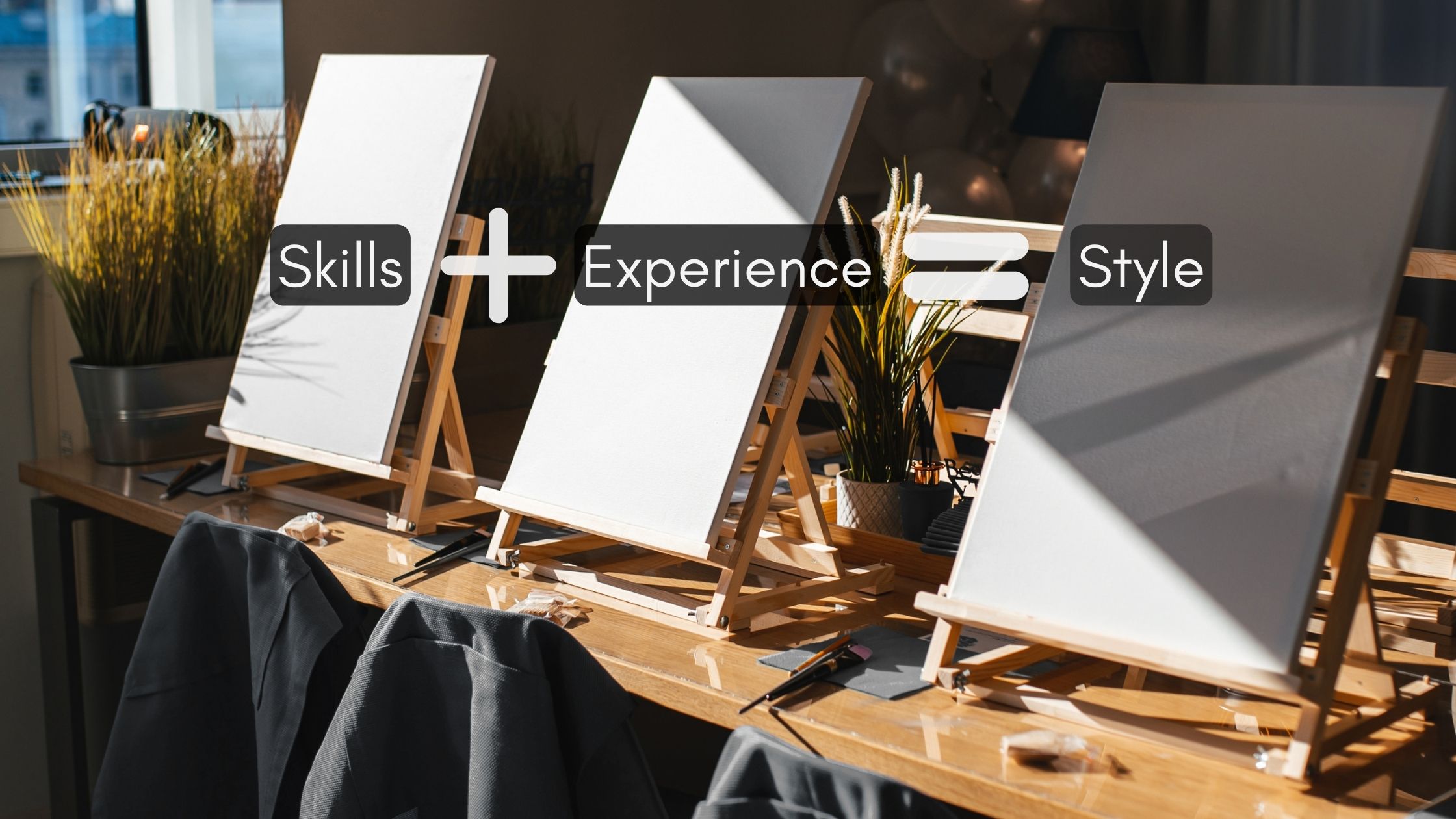
The takeaway from Sam is that whatever got you into art in the first place, “doing what makes you happy” plays a vital role in your development as a creative person.
The goal was to fix my knee. I achieved this by addressing the fundamentals of physical mobility.
Using that framework, if the goal is to find ways to build my drawing experience, I need to follow a plan that addresses the fundamentals of art.
In time, with consistent training that builds my experience, a style will naturally emerge.
Don’t look for ways to find a style, but rather find ways to build experience.
So, borrowing from the principle of using a training program for a fitter body, it makes sense to have a plan with learning goals to get better at art.
Passion for “what makes you happy” is again an important component when setting learning goals. Passion is sometimes the only thing to keep you going when the going gets tough.
For instance, it’s fine to stay motivated to make art. It’s tougher to stay consistent with practice when it’s boring or actually hard – like physical therapy.
There’s another dependable way to keep up with practice – it’s discovering “the zone” of your natural approach to learning.
📚 Are you ready to set goals for your art? In the article Five steps to becoming a better self-taught artist, I walk you through how to set up a learning plan (this post includes a free PDF template).
Make progress by knowing your learning preferences
You’ll be keener to keep up with your art practice if you are “in the zone”.
Being “in the zone” happens when you’re so engrossed in an activity, that it’s akin to being suspended in a time bubble immensely more satisfying than anything else.
In that context, you can attain results faster or with more ease because you’re operating within “the zone”.
Simply put, when you’re fully engaged in what you’re doing, that activity becomes more energizing, which creates a positive cycle.
Once you’ve discovered how to be in “the zone”, it becomes a dependable way to stay motivated and consistent with whatever you’re trying to achieve – such as:
- Completing a plan;
- to master the art fundamentals;
- so you can keep practicing, and gain experience;
- which in turn will help reach your art goals.
This state of being in “the zone” is not only positive for your creativity, but it’s also beneficial for how you learn and apply new things.
It has to do with your natural preference for how you receive and retain information.

What are adult learning preferences?
Here’s a scenario:
Have you ever been disappointed by how little you learned from taking a highly-rated course?
Alternately, have you ever come across a random tutorial where someone like Sam showed you their process and somehow it felt like you learned a lot?
Why did one resonate with you where the other failed? Was it the content? Was it the presentation? Maybe it was both. Let’s dig deeper.
When I did my master’s degree in Leadership and Training, we spent a significant amount of time studying the topic of Adult Learning.
That’s when I was first introduced to the concept that we each have a preference for how we receive information as well as how we retain that information.
These preferences have an impact on how we learn and how we apply those learnings in life.
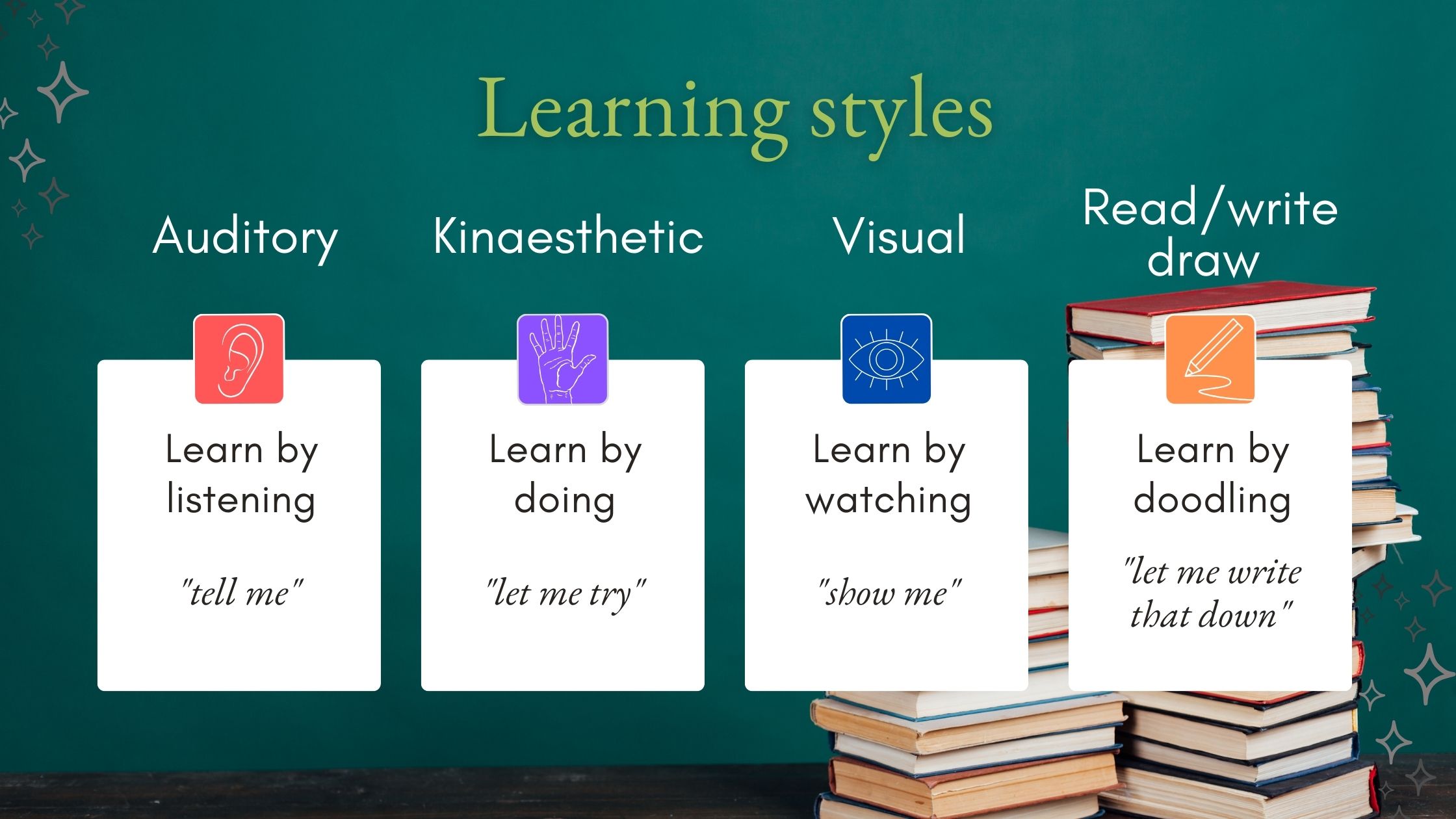
Auditory
- Learns best by first listening – “tell me how”.
- This learner prefers podcasts, lectures, audiobooks.
- This person remembers what people have said and the lyrics to songs.
Kinaesthetic
- Learns best by first doing – “let me try”.
- This learner prefers to practice a concept as it’s being introduced, is hands-on, and wants to skip the theory and jump into action.
- This is the person who assembles items out of the box without first reading the instructions.
Visual
- Learns best by first watching – “show me how”.
- This learner prefers watching a demo or a process video even if there’s no voice-over to explain.
- This is the person who’ll flip through a book to look at all the pictures and ignore the big blocks of text.
Read/write/draw
- Learns best by first taking notes, drawing mind maps – “let me write that down/doodle it”.
- This learner prefers to doodle concepts as they’re introduced, likes to take notes, draw mind maps, and also likes to read the text that goes along with the pictures.
- This person appreciates a step-by-step manual with examples or a workbook with instructional exercises.
Depending on the situation, you’ll have a preference for one or more of the above ways to receive information.
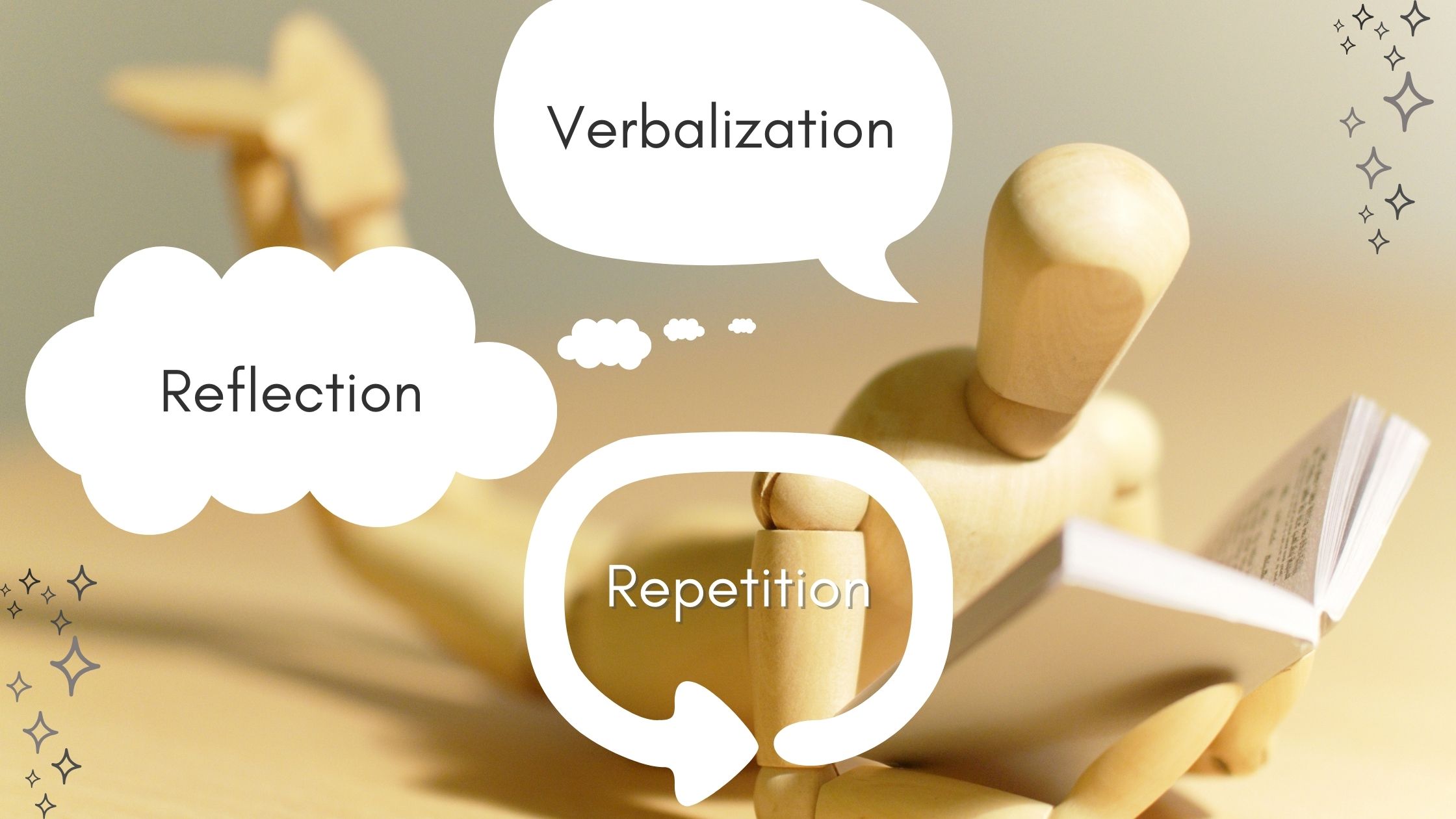
Effective ways to apply new learnings
To retain the information, you’ll lean towards one or more of the preferences below:
Reflection
This person needs to think about it to determine if the information is relevant to them in a real-life situation.
Verbalization
This person needs to discuss the concepts with others or talk it out loud to understand how the information can be applied to their situation.
Repetition
This person needs to apply the concepts to determine if the information is of benefit to them. This person may also prefer more time of repeated practice before they are comfortable with applying the concepts to a real-life situation.
Sometimes we’re surprised by the degree of interest we have for an activity or topic that would normally not be appealing.
This happens when a topic is presented in a way that caters to how we best receive and retain information.
Reflect on the past to create new learning experiences
If you’re uncertain about your preferences for receiving and retaining information, ask yourself the following questions:
- What has worked best in the past? When did you feel most engaged with what you were learning?
- What was boring or frustrating? Was it because of the topic/activity, or with how the information was presented?
- Was there knowledge in the past that you learned but have since forgotten and never used for anything?
- Were there instances when you retained seemingly random information that turned out to be useful and unexpectedly valuable?
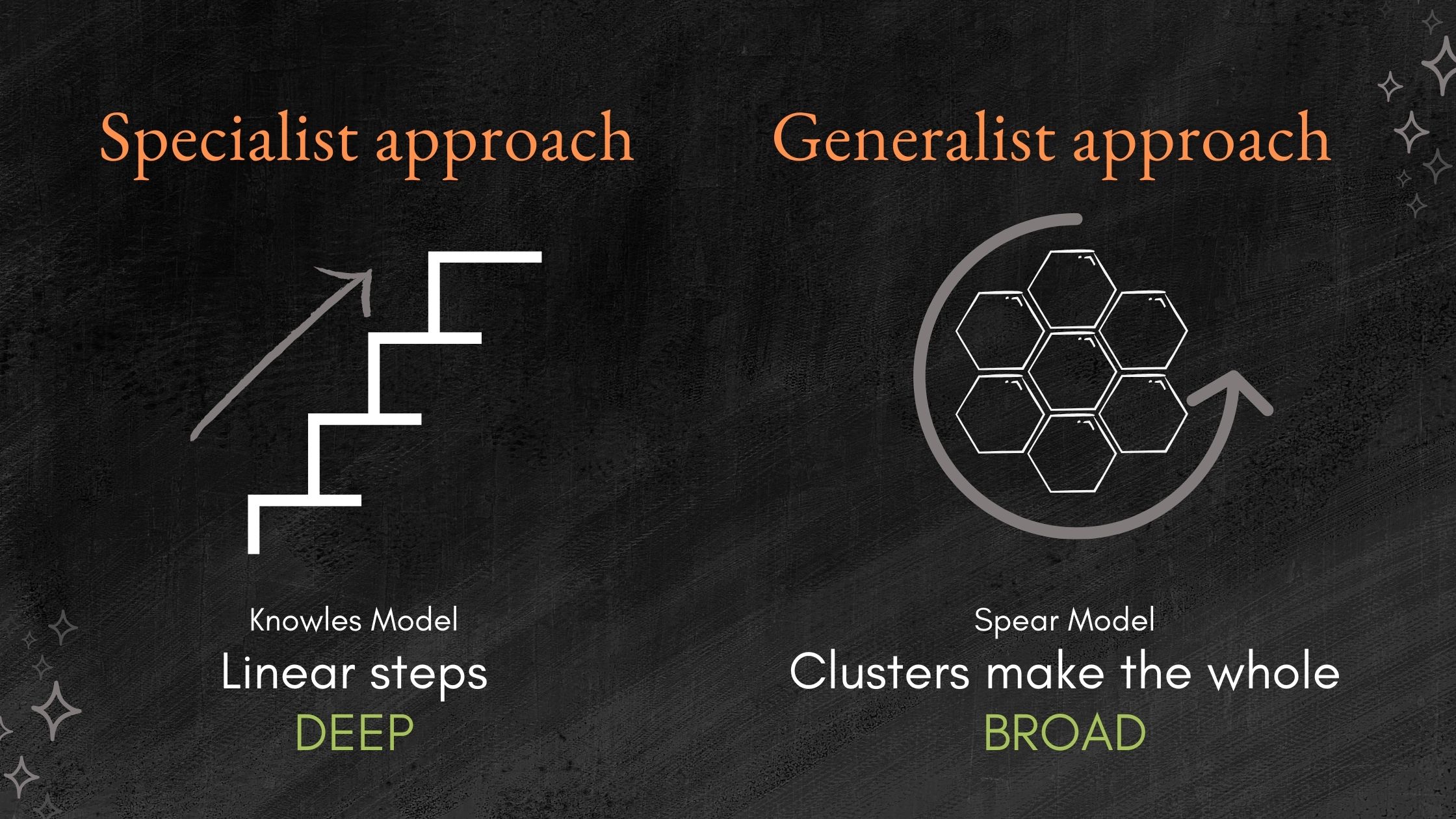
How to stay engaged with your art goals
Now that we’ve discussed learning preferences, we’ll look at how we apply this to our art goals. By understanding how we typically approach learning activities, we’ll be able to make progress faster.
The two most common types of approaches are:
- Generalist
- Specialist
To determine which type is more like you – Let’s do a quiz!
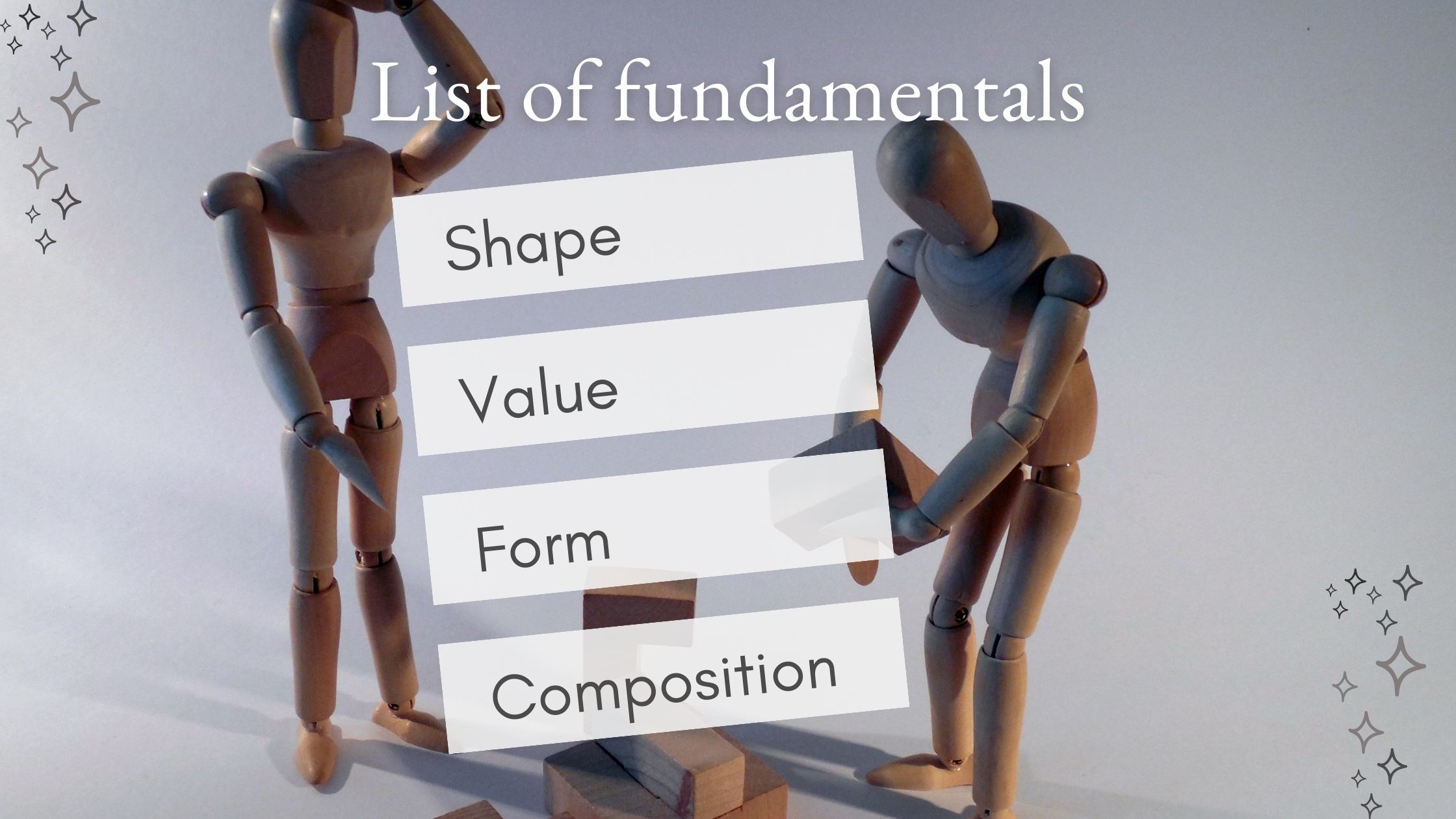
Quiz question no. 1
You’re given a learning activity. The objective is to apply the art fundamentals in a class project.
You’re then provided the list of the fundamentals to be used in the assignment.
Are you most likely to:
- Practice as much as you can one fundamental before moving down the list
- Practice a bit of each one, skipping around the list
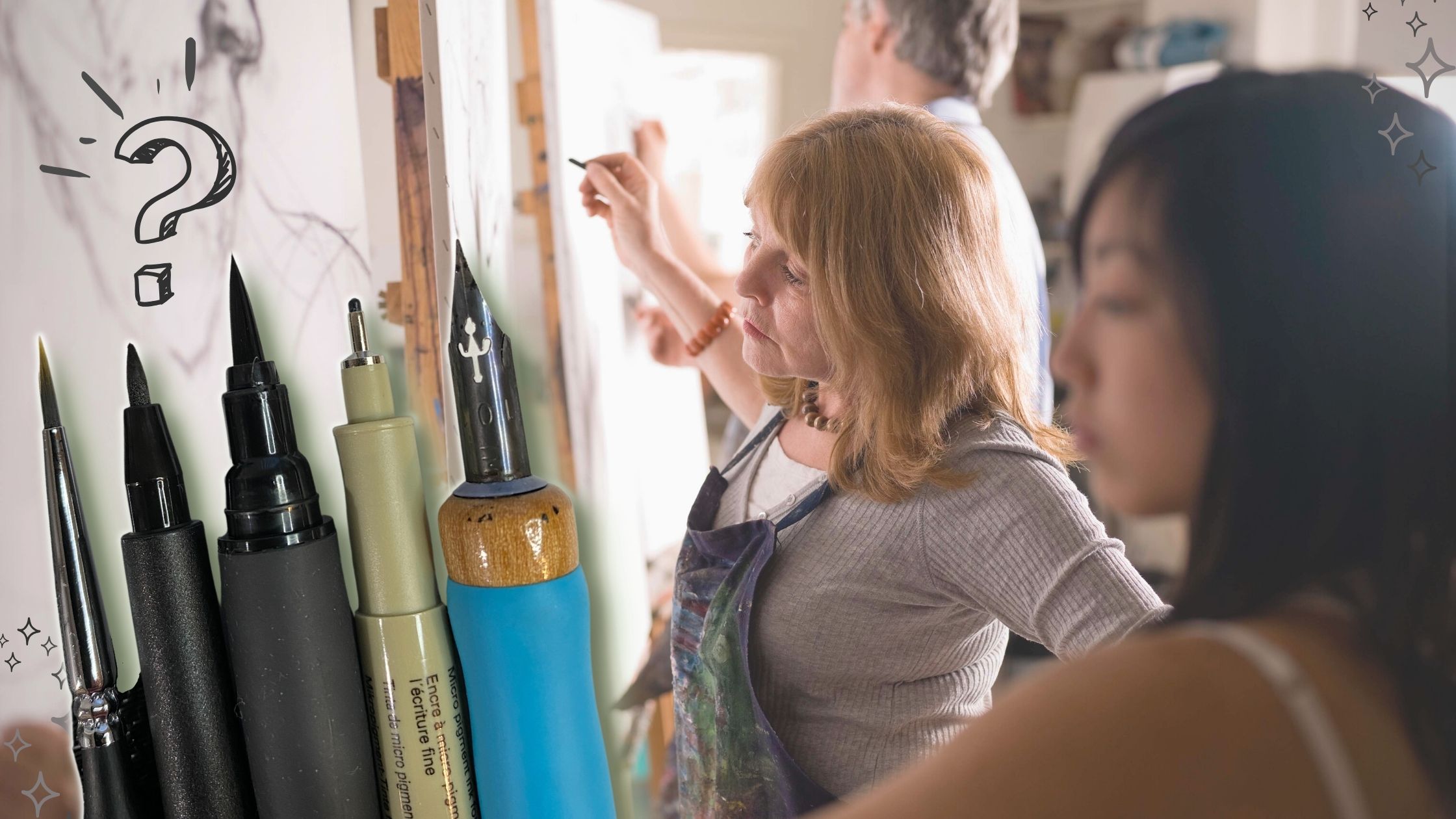
Quiz question no. 2
For the class project, you’re provided with the option to use up to five drawing tools. These tools are new to you. You have never used them before.
Is it more exciting to:
- Practice with a couple of the tools then use those to complete the drawing
- Use all of the five tools together to complete the drawing
According to the Knowles Model, a specialist approach is more linear.
A learner will prefer to follow a progression of steps. They tend to go deep into a topic or activity before moving on to another.
If you answered “A” you’re more inclined toward a specialist approach.
This doesn’t mean that you can’t be versatile. It’s simply an indication that you’re likely to be more engaged in an activity if you have the opportunity to concentrate on one thing at a time before moving forward.
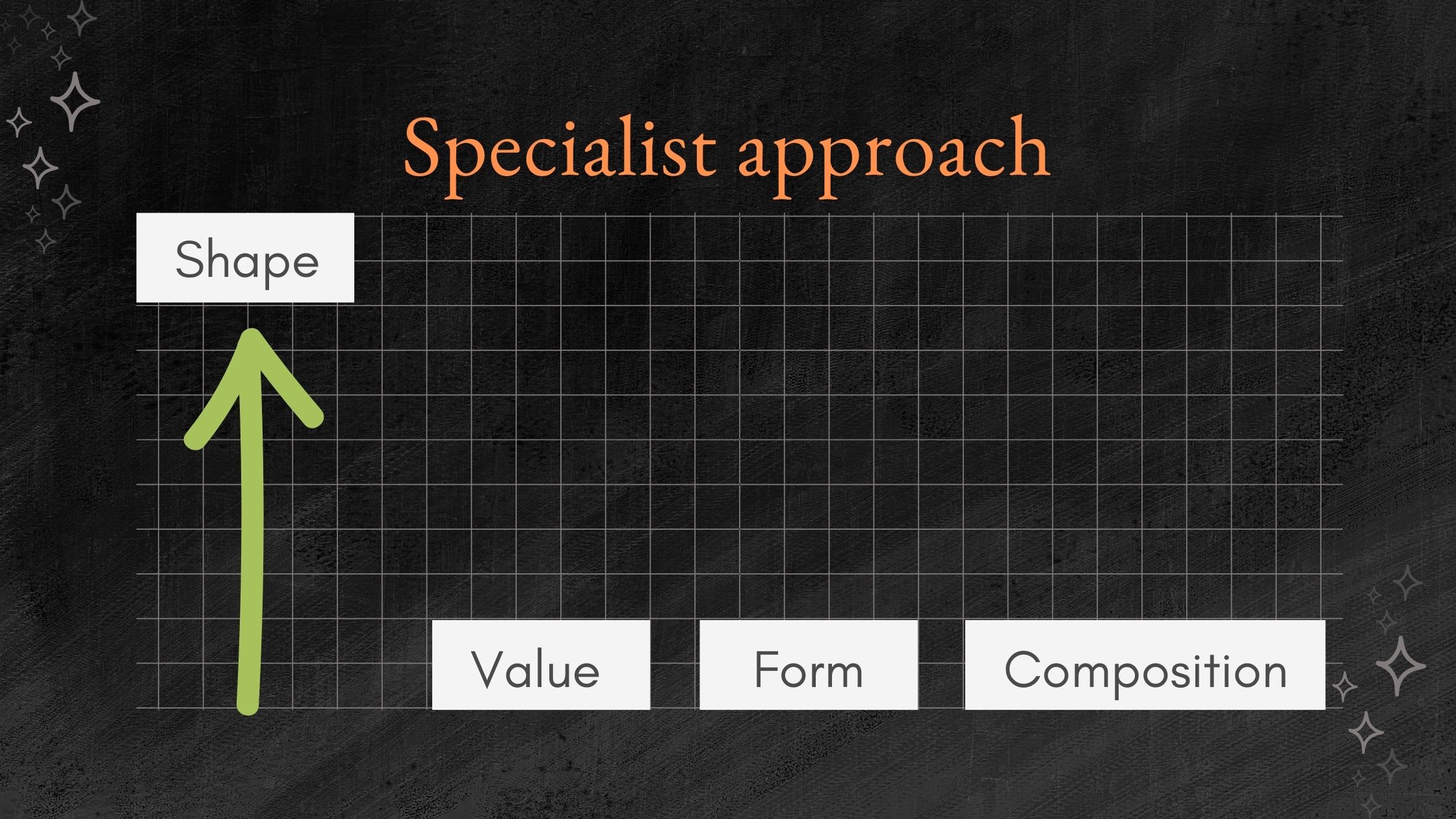
According to the Spear Model, a generalist approach is like a cluster.
A learner will prefer to participate in clusters of activities, try several topics and make progress as a whole. They tend to go broad before circling back to go deeper into a topic or activity.
If you answered “B” you’re more inclined toward a generalist approach.
A generalist is not necessarily a “jack of all trades”. A generalist approach is simply an indication that you’re likely to be more interested in an activity if you can try out each one before circling back to your favourites.
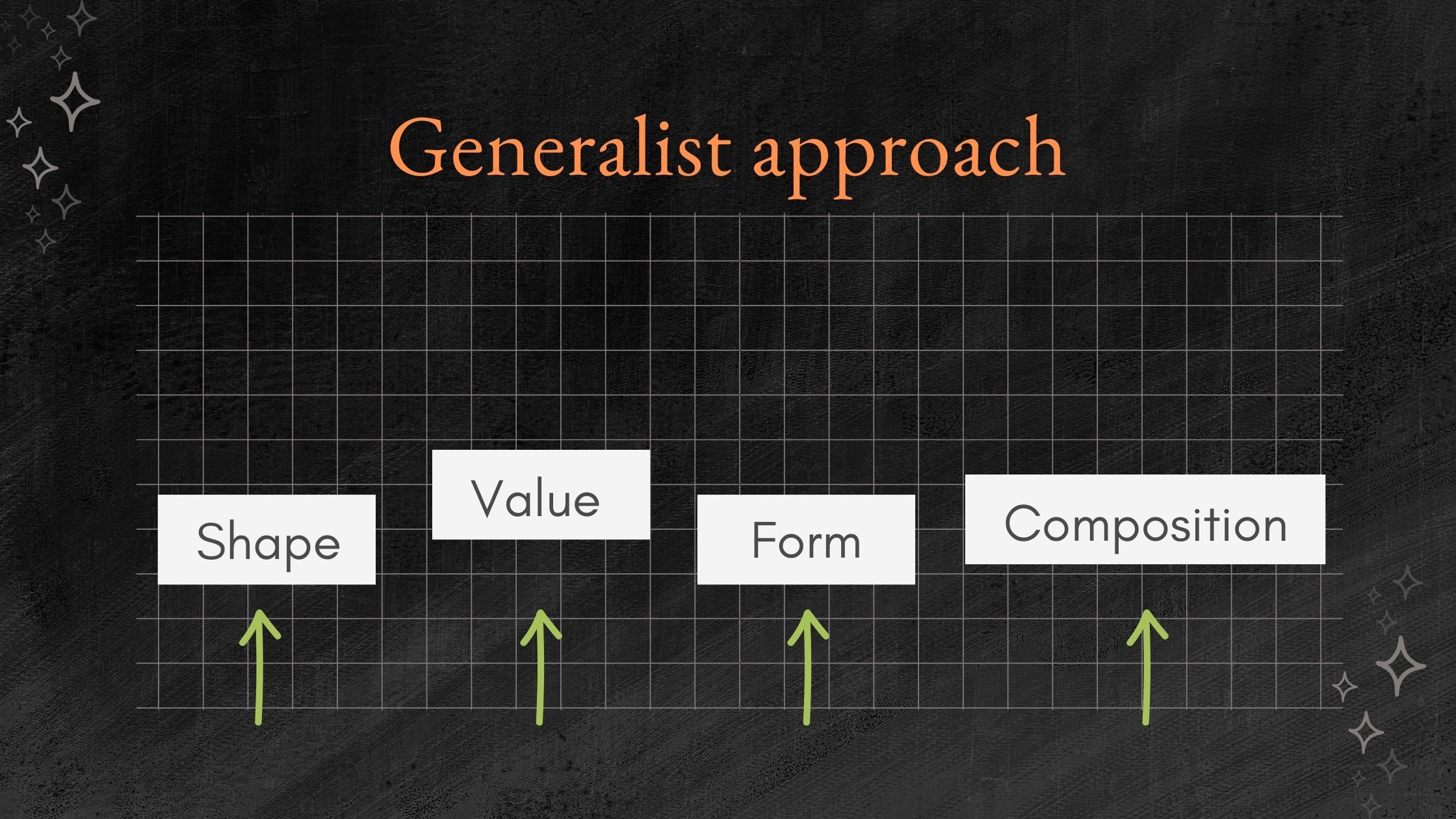
Your path to full engagement – Example
To piece this all together, here’s mine as an example:
My learning preference for receiving information is “read/write/doodle”.
I typically look at a lot of references, and do a multitude of sketchbook studies to better understand my subject before going to a final drawing.
My learning preference for retaining information is “repetition”.
If I don’t immediately apply something new, I’ll forget it.
I need a high volume of practice to retain that information. So, if I’m trying to improve a specific technique, I’ll repeat the exercises until I’m comfortable applying the new technique to my final drawing.
I have a specialist approach to applying new learnings.
I prefer to progress step-by-step with an activity.
I like to delve deep into a topic before moving to the next phase. Even though I’ve been drawing for several years now, I still invest a significant amount of time to master the basics before moving on to more complex concepts.
📚 If these principles of Adult Learning sound interesting, there’s more you can learn about yourself through these concepts. My favourite resource for this is: Making Sense of Adult Learning by Dorothy MaCkeracher (book on Amazon).
How quickly you grasp a concept or master a skill is largely influenced by whether there is a match between how the content is presented and how you naturally prefer to learn and apply new skills.
By having a higher awareness of these preferences, you’ll be better equipped to make progress on your goals.
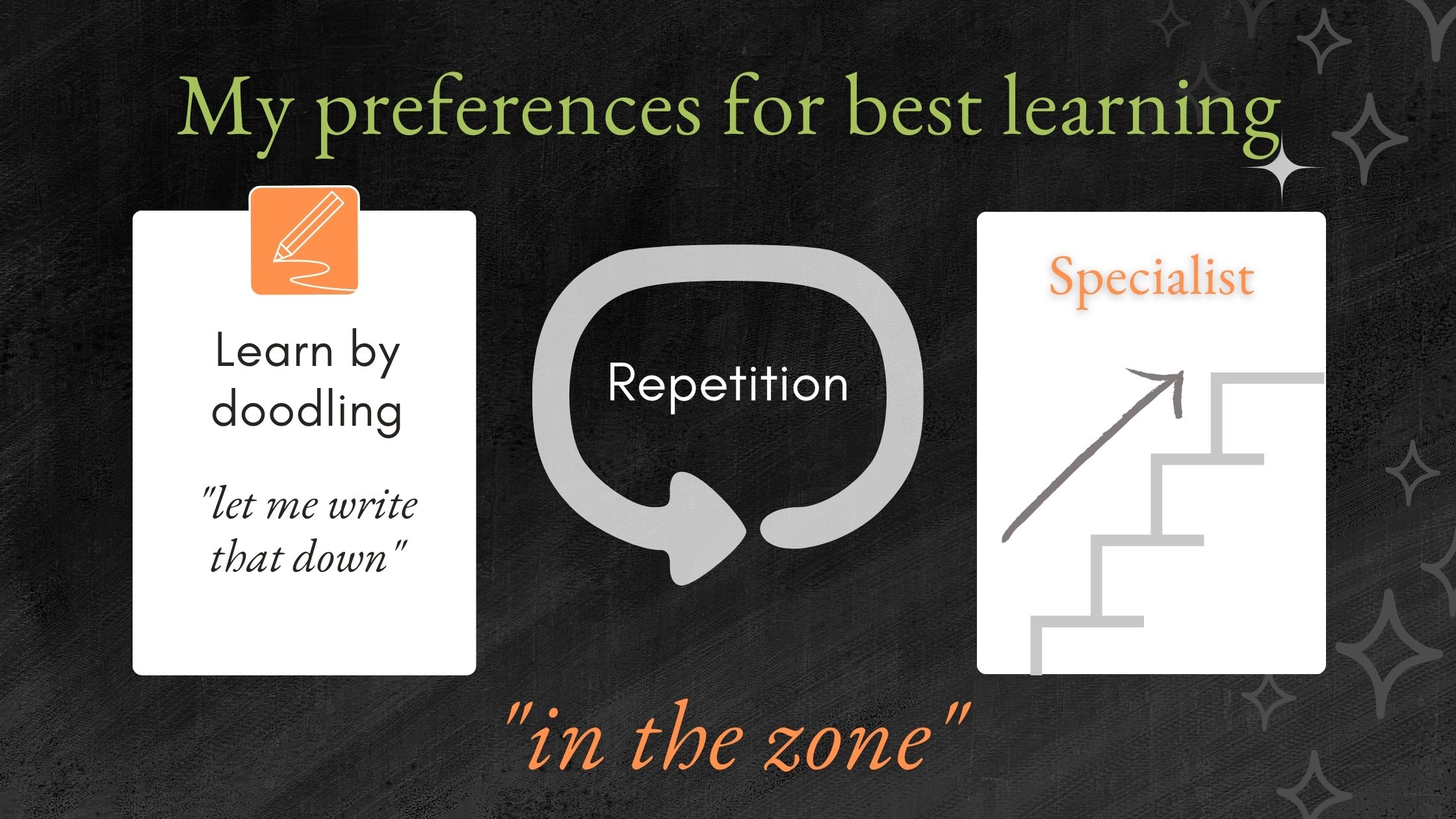
Making explosive progress with your art goals
Passion, coupled with our natural approach to learning can help us get the results we want.
Whether at the beginning of your art journey or aiming to progress to higher levels, a key takeaway from the pros is to focus on building experience so that your art style can evolve with time.
By doing the type of art that makes you happy, you’ll be more motivated to pursue goals even when the process gets tough or boring.
Another reliable means to stay motivated while learning and practicing new skills is to operate within “the zone”. This happens when a topic is presented in a way that caters to how you best receive and retain information.
By having a higher awareness of these preferences we can be more consistent with whatever we’re trying to achieve – such as completing a plan to master the art fundamentals so that we can practice consistently, and gain experience, which in turn will help reach our art goals.
Start your plan by incorporating one or two of the key points discussed, then add to it as you make progress.
As always, I wish you the best in your art journey.
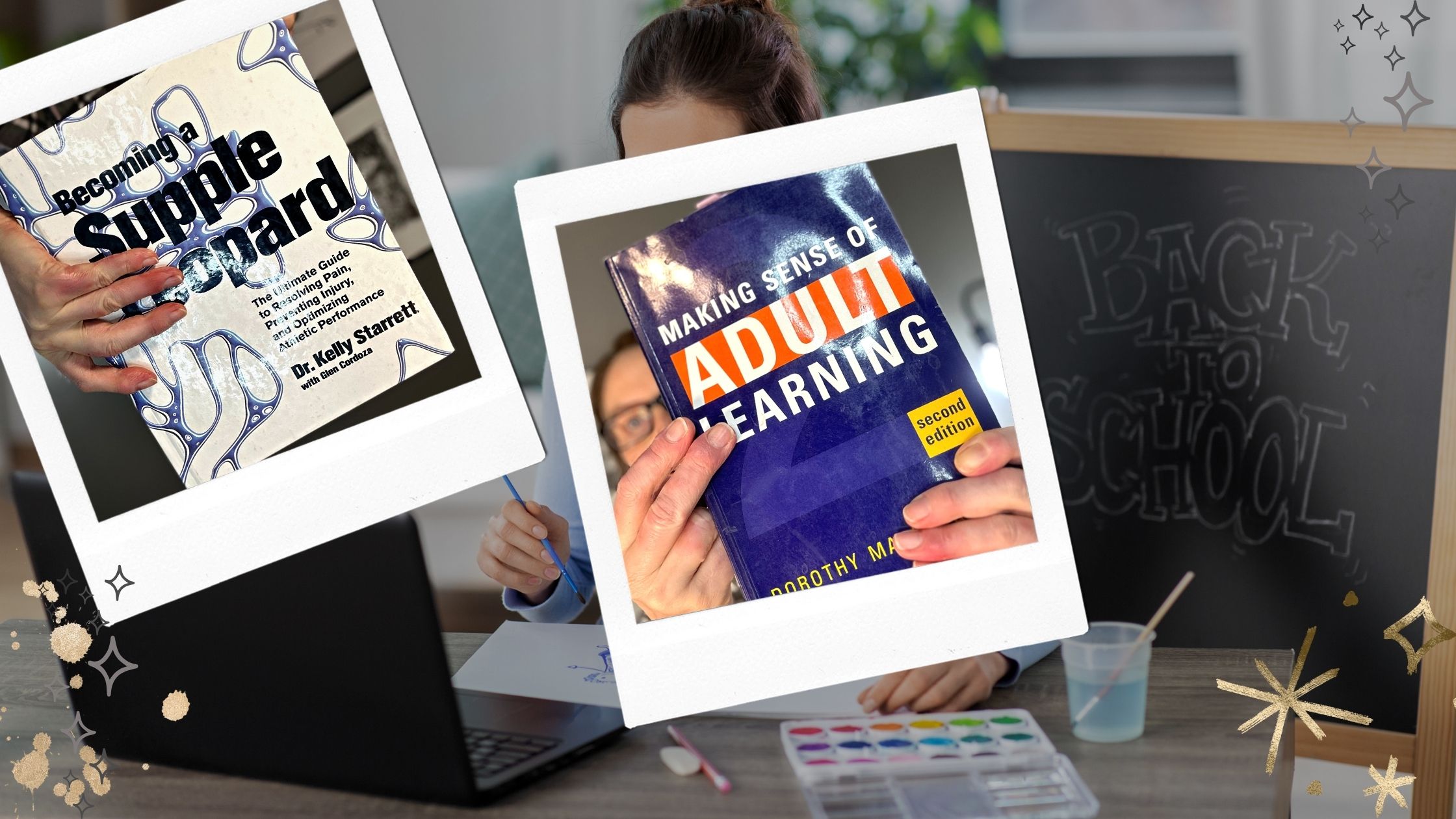
Resources
Advice from Sam Yang (YouTube playlist)
Making Sense of Adult Learning by Dorothy MaCkeracher (book)
Dr. Garrett’s Supple Leopard (book)

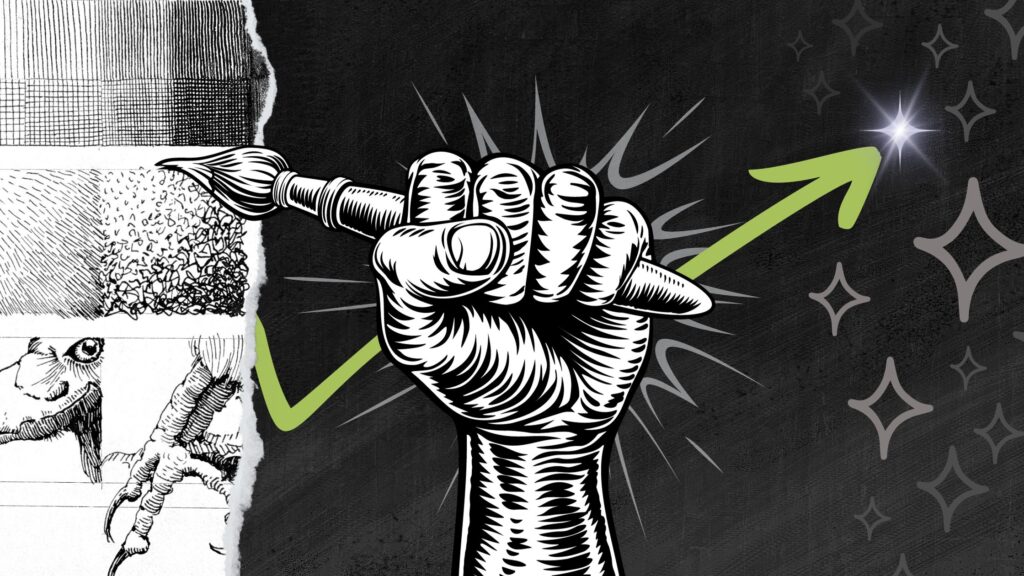


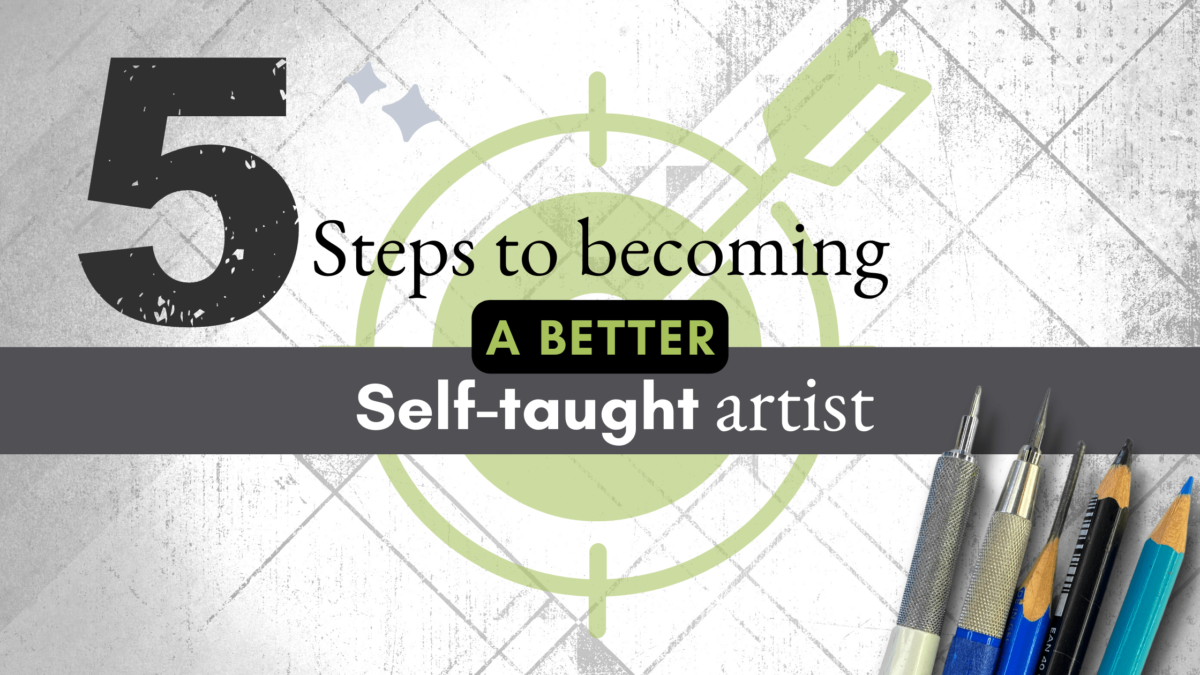
This text is extremely useful, as are you other posts about learning to draw and making progress. Your emphasis on a planned, systematic approach to learning (or “self-teaching”) is precious and fits me to a t. I’m a “specialist” type of learner and actually my profile is exactly the same as yours, which makes this post even more convincing. Evident.
I bought a few “How to Draw” books, and I think my selection is all right. They all have some kind of structure to learning the art, but none mentions cleary the importance of the various personal types of approach. Thanks a lot!
Glad to hear! Thanks for reading my blog, and I wish you the best with your learning plan.